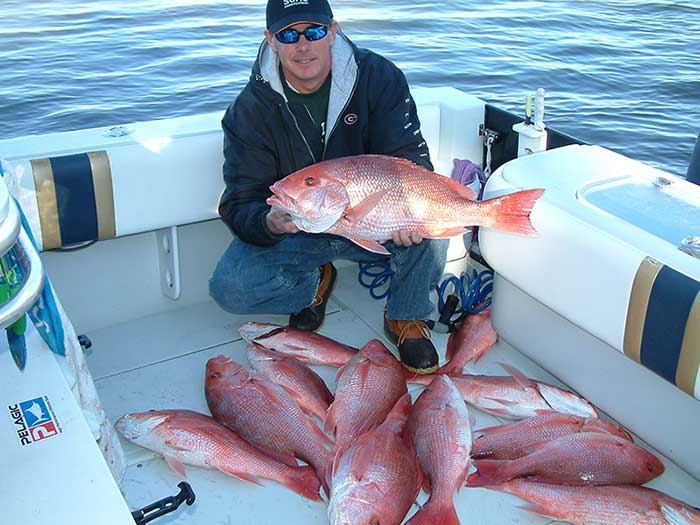How To Night Time Patch Reef Fish
Night time Patch Reef fishing can be some of the most exciting, non-stop action there is. There are so many different species to catch on the patch reefs and there are certain techniques and equipment to improve your chances of having a successful night on the patch reefs.
Items & Equipment
- Bait for patch reef fishing
- Sand for making patch reef chum
- Chum for patch reef fishing
- Tackle for fishing patch reefs
- Oatmeal for making patch reef chum
- Chum Net for chumming on patch reefs
- Rod & Reel for fishing patch reefs
- Menhaden Oil for making patch reef chum
- Underwater Lights for night time patch reef fishing

Bait
When fishing the patch reefs, bait is one of the most important things you should focus your time on getting. Live bait and chunk baits are the most commonly used bait on the patch reefs. Live bait is one of the keys to producing quality fish and getting the best reaction bites. Live baits include pilchards, ballyhoo, sardines and more. You can catch your own live bait by reading the chumming column below. Chunk bait is a close second and includes baitfish such as mullet, ballyhoo, bonito, barracuda and more. It is important that any chunk bait you use is as fresh as possible and contains lots of oils as an attractant for your targeted catch.
Chumming
Chumming is a crucial component to patch reef fishing and helps creates an ecosystem around your boat. Before heading out for the night to fish the reefs, you need to obtain at least 4-6 blocks of chum, depending on how long you intend on being on the water. Chumming is essential to getting bait around your boat and being able to catch it either by cast net or sabiki rig.
To set up, you first need to locate the part of the reef that you would like to fish and anchor just up-current of it to ensure that you don’t disturb the reef and its habitat. Once anchored, before you get the rod and reels ready, you need to set up your chum slick by placing 2 of your chum blocks in a 2 separate floating ring nets and securing them to the back or sides of the boat. Once you have your chum nets set up, you can start your sand ball mixture to create even more scent in the water. To make this mixture, you will need to place your oats in a 5 gallon bucket with sea water and mix well, then add a thawed block of chum to this mix and stir, after that is done, you can mix in your menhaden oil and sand. Thoroughly mix all of this together and make fist sized balls and carefully place one in the water to let it sink to the bottom. Do this every 5-10 minutes to keep the fish interested.
Underwater Lights
Underwater lights is just one more invention that changed the game of night time fishing and with them, you can create more of an ecosystem around your boat. In a dark ocean, you will be the only light in the water and you become a safe haven for fish to come to as they feel more secure when they can see. Unknowingly, they are lured into a trap and you can catch live bait that gathers around the lights. There are many varieties of underwater submersible lights and it is up to you to choose what works best for you. Most simply attach to a battery with alligator clips and are automatically turned on. Place them in the water off the back or sides of the boat and watch them start to attract baitfish to your boat.
Tackle
Most anglers have their own preference on tackle to fish the patch reefs. This is a suggestion of where to start and get you on the water catching fish as you perfect your skills and what works best for you. For smaller fish such as Yellowtail Snapper and Mangrove Snapper, you will want to use a smaller hook as they have smaller mouths and see very well and may be deterred from the sight of a larger hook. A good size hook for targeting these species is a #1-2/0 circle hook for bottom fishing on the patch reef. Vanguard Wolfe offers the “Patch King” hook series for this specific type of fishing. If you are going after the larger species like Mutton Snapper and a variety of Grouper, you will want to use a larger hook, like the “Patch King” circle hook in sizes 3/0-5/0.
Rigs are important when fishing the patch reefs as you need to work the entire water column, as you will likely have fish throughout the column if you have chummed properly. You can live line a ballyhoo behind the boat and let it swim freely until it’s eaten. We prefer to keep our live line rig as tackle free as possible, to do this we simply tie a 4-6 ft. section of 15-20 lb. fluorocarbon to our mainline and then tie a loop knot for your hook. To fish a little further down in the water column, you can simply attach a split-shot weight to your rig to weigh it down and get to the center of the water column. To fish on bottom, you can use the “Carolina Rig” to get you bait to the bottom and get some of those decadent Grouper and Mutton Snapper. For the “Carolina Rig” and bigger fish, you may want to bump up the line size to 30-50 lb. leader.
Rod & Reel Combos
A proper rod and reel combo is crucial for this style of fishing. You want to be prepared for light and medium tackle for the various species of fish that hold on patch reefs. For the smaller variety of fish, a 7 ft. 8-15 lb. class rod, coupled with a 2000-3000 size spinning reel spooled with 15-30 lb. braided line offers the best combination for light tackle fun and enough backbone to turn a slightly larger fish. For larger species fish, you will want to use a 7 ft. 15-30 lb. class rod with a 4000-5000 class spinning reel spooled with 30-50 lb. braided line to ensure you will be able to turn those large Muttons and Grouper. You will want to have multiples of these rod combos on the boat to keep you well equipped for what the reef has to offer.
Attention Guides and Pro’s – Please feel free to contribute your how to fish and how to rig articles with a link back to your website. Email for info at vanguardwolfe@gmail.com

